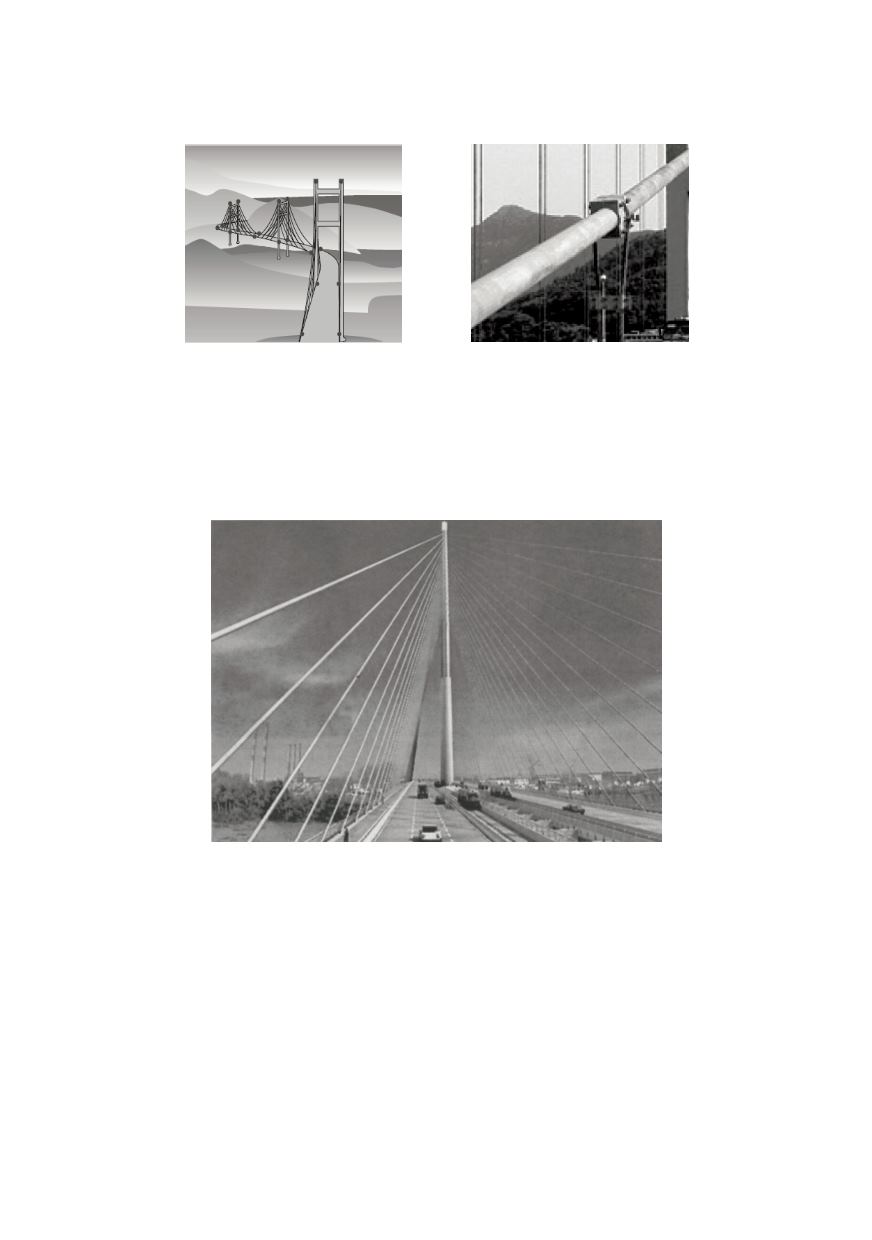

244
accuracy. On the other side, motion due to wind loading is cyclic with frequencies of a
few hertz. Little or no averaging can be done, positioning accuracy is about centimeter.
Figure 4: Critical points whose positions are measured occasionally (left) and
continuous deformation monitoring of bridge component (right) /7/
This restricts the utility of GPS for monitoring short-term motion to more flexible
structures. Because vibrations of rigid structures are small, it is difficult to monitor them
using GPS. GPS is in common use to monitor the flexible structures, such as long-span
cable-supported bridges, high buildings and large objects. Examples are bridge ’Gazela’
and designed bridge over Ada Ciganlija in Belgrade, Fig. 5.
Figure 5: Model of designed bridge over river Sava at Ada Ciganlija in Belgrade
The experience with system for real-time displacement monitoring of a large-span
bridge, which allows recording its fatigue history is described here first (Fig. 6). The
system is applied to the Tsing-ma Bridge of Hong Kong and Humen Bridge of Guangdong
in China /8/. Three basic elements included are: GPS receiver, Data transmit system and
Data manage and real-time monitoring system. The sampling frequency of GPS receiver
can reach 20 times per second, while the location precision can approach 5~10 mm. So
the GPS can be used in the displacement monitoring of large structure.
Following requirements had been fulfilled in system design:
–
The basic vibration period of Tsing-ma Bridge is 8~14s, the basic vibration period of the
towers is about 4s. The sampling frequency has to be above 1 Hz under typhoon, and
after it should be > 4 Hz, and these can be modified artificially.


















